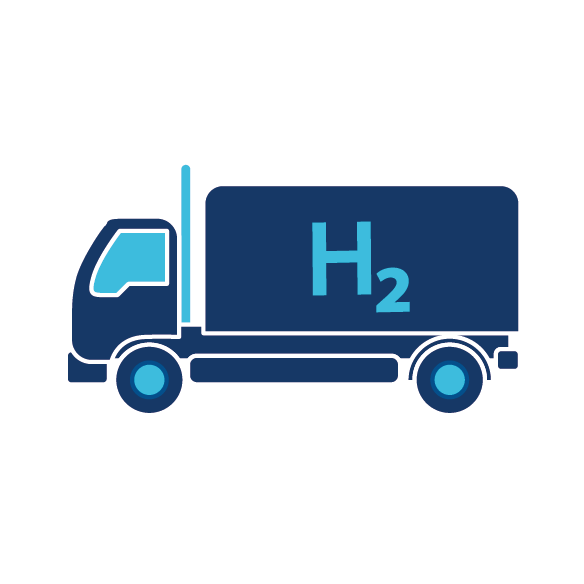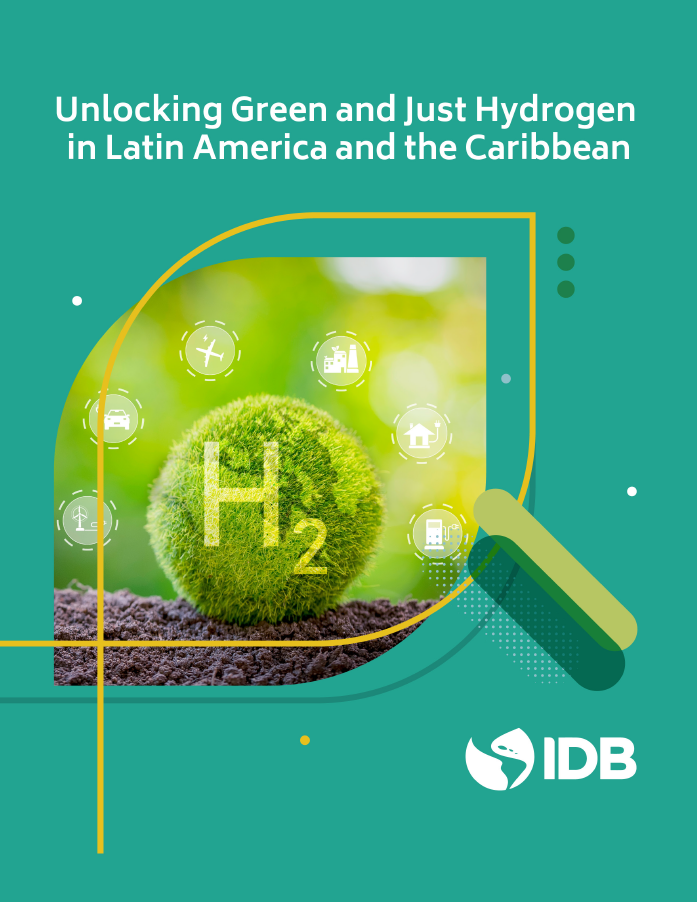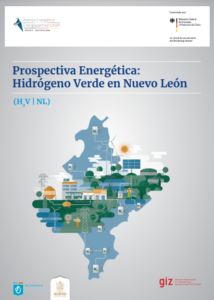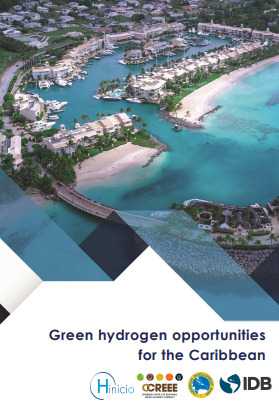Latin American and Caribbean (LAC) countries are increasingly focusing on clean and low-carbon technologies, aligning themselves with the global sustainable energy transition. Abundant natural resources in the region are laying the groundwork for an emerging renewable hydrogen industry. This trend is underscored by the Latin American Energy Organization (OLADE), which reported that 59% of the region’s electricity in 2022 was generated from renewable sources. Such a strong commitment to renewable energy not only aligns with global sustainability objectives but also sets a favorable stage for the advancement of renewable hydrogen technologies.
Renewable or low-emission hydrogen offers a viable alternative to reduce dependence on fossil fuels in different economic sectors. It is particularly valuable in sectors that are challenging to electrify, often referred to as “hard-to-abate sectors,” such as the maritime industry, steel production, and the manufacturing of fertilizers and explosives for mining, among others. Additionally, it serves as an export product to importing markets projected to be the most demanding in the coming decades, such as the European Union, Japan, and Korea.
Recognizing this significant market opportunity for the region and their national economies, several governments in the region, such as Chile, Colombia, Uruguay, and Brazil, are actively integrating this technology into their national energy policies and greenhouse gas emissions reduction objectives. This aligns with the establishment of national hydrogen associations and events focused on this market, making 2023 a year that has diversified and strengthened the foundational elements for this future market. Given these recent developments, what specific and crucial advances have been observed so far this year, and what can be expected in terms of the region’s global leadership by 2030?
Hinicio provides some insights to address these questions
Hans Kulenkampff, Head of Hinicio Latin America, remarks that the regional hydrogen market is gaining significant momentum in terms of project development, investment strategies, and public policies. This momentum has intensified since 2022 and continues into 2023. “In our measurements conducted through the H2LAC Index over the past three years, we have observed that countries like Chile and Colombia have solidified their initial development stages thanks to the formulation of national roadmaps, the emergence of several public technical, market, and regulatory studies, pioneering legislation in the region, a political willingness to reach international agreements, and a thriving ecosystem of associations and events, among other factors. These factors promote both investment and drive private-sector participation in the development and implementation of industrial projects.


H2LAC Index 2023. Resultados preeliminares – Fuente: Hinicio & NewEnergy
However, a slowdown is beginning to be noticed relative to other nations or geographies (especially in the northern hemisphere). This is due to the lack of clear incentives and/or financial mechanisms, political volatility at the local level, difficulties in navigating environmental and sectoral permitting, high dependence on international off-takers who, in turn, rely on government decisions that have not yet been regulated for importation, and the absence of uniform development across the various stages of the hydrogen value chain for possible domestic consumption.”
2023 has been a pivotal year for Latin American countries like Brazil and Uruguay in the hydrogen sector. These countries are advancing independently, making significant strides in the second phase of hydrogen projects. By 2030, some countries may establish themselves as major players in the global hydrogen market through individual initiatives, while others could gain a foothold via regional and international partnerships, each targeting different segments of the market.

Congreso H2LAC 2023 – Source: Hinicio
In terms of production to meet future markets, how is the development of projects evolving, and what could be their impact in the coming years?
Juan Pablo Zúñiga, Country Manager of Hinicio Colombia, highlights that the development of Power-to-X projects, focused on converting renewable energy into hydrogen or its derivatives, has made significant progress in Latin America and the Caribbean compared to five years ago when there were only a few pilot projects in the region. He also believes that 2023 appears to be a promising year for countries like Colombia, Chile, and Brazil. However, these developments are not without challenges. In some cases, certain projects may not reach the final investment decision (FID) stage. Therefore, prioritizing projects with tangible social benefits is essential, as is focusing on obtaining certifications, securing financing, and refining project design..
“An important aspect of the development of these projects is the creation of common-use infrastructures (CUI) in high-potential areas. For example, in Brazil and Chile, there is work underway on the development of ‘hubs.’ However, the implementation of infrastructure presents challenges, which is why Hinicio is working on governance structures that allow CUIs to effectively meet the requirements of different business models while minimizing environmental impact and maximizing positive community impact.”
Dialogue and cooperation among all stakeholders involved are essential to advance in these matters. “We all want to fight the climate crisis, but the challenge is not easy because we must do so while simultaneously protecting biodiversity and adding value to the territory. This must be supported by good public planning, considering issues related to land use planning and strategic environmental assessment.”
The progress of Power-to-X projects is encouraging but comes with challenges. Strategic public planning is crucial to ensure sustainable development, maximize the potential of these projects, and accelerate the transition towards a more sustainable economy in the region.
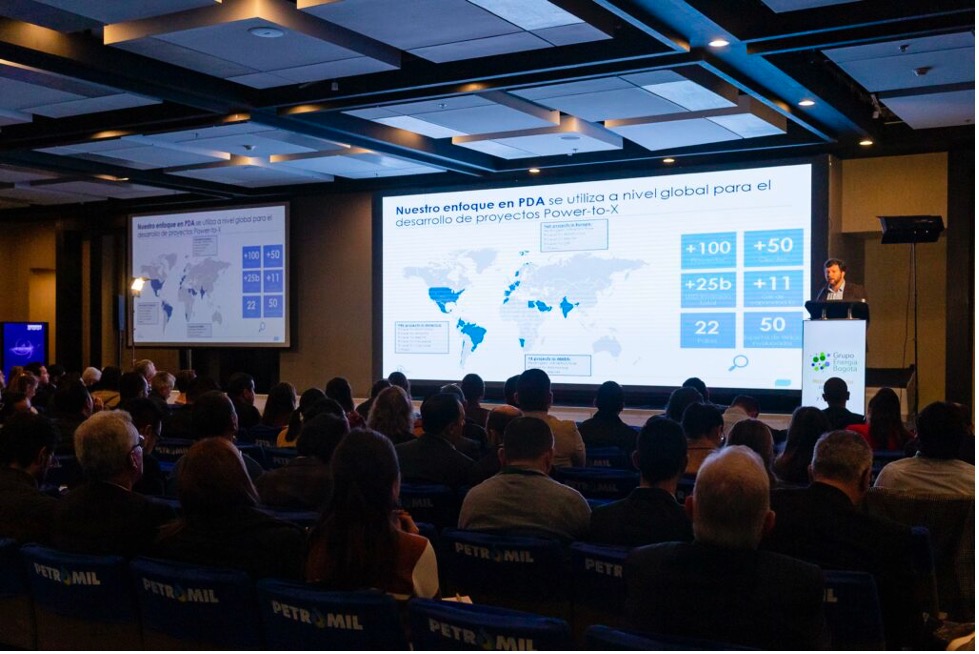
2º Congreso Internacional de Hidrógeno Colombia – Source: Hinicio
What is happening in terms of the ecosystem?
At Hinicio, we have observed that, while it is true that there has been a growing interest in creating hydrogen associations at the local and regional levels throughout the year, such as the Ecuadorian Hydrogen Association (H2 Ecuador), the Association of Green Producers of Green Hydrogen and its Derivatives from Magallanes (H2V Magallanes AG), the Association of New Energies and Hydrogen in the Caribbean in Colombia, or the Brazilian Pact for Renewable Hydrogen, the growth of the ecosystem has been primarily marked by the organization of events focused on this technology and its derivatives.
In the first six months of the year, more than 30 hydrogen-related events have taken place, including conferences, webinars, seminars, exhibitions, and more. These events have stimulated the growth of this market through important discussions and projections for its development.
For example, Colombia hosted the 2nd International Hydrogen Congress, Brazil held the 3rd Annual Hydrogen Congress for Latin America and the Caribbean, known as H2LAC, and Chile organized HyVolution 2023. All of these were events focused on hydrogen within the regional context and linked to the three countries that currently lead the market in Latin America and the Caribbean. In these gatherings, the Hinicio team has participated, and significant announcements have been made, including the creation of the Hydrogen International Trade Organization in Panama (expected to be officially launched at COP 28), the interest in establishing a regional hydrogen certification scheme, the potential for Brazil to become the most attractive hydrogen market in the region, the upcoming release of Bolivia’s Hydrogen Roadmap in September of this year, and the importance of advancing enabling regulatory frameworks for the industry in several economies across the region.
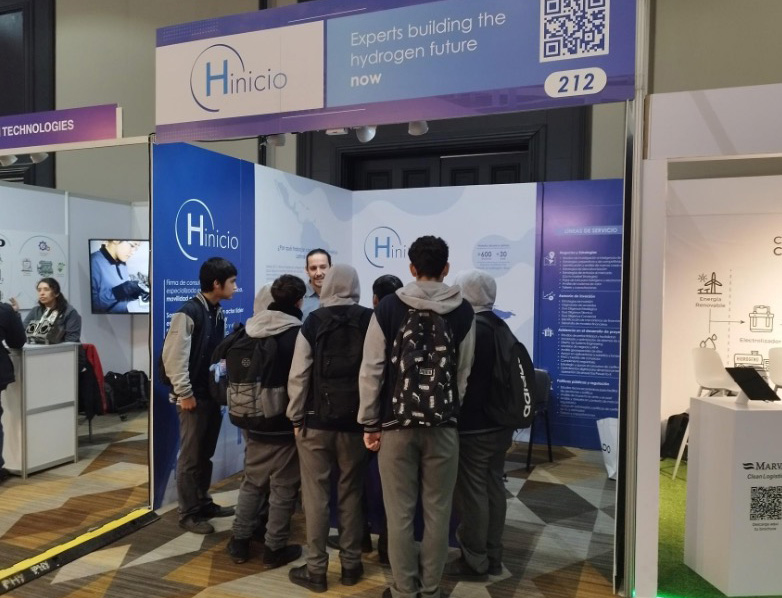
Hyvolution Chile 2023 – Source: Hinicio
So, understanding the importance of legislation, what have been the most significant advances in regulatory frameworks?
Among the most relevant news this year, the Ministry of Energy and Mines in Peru presented a bill to Congress to enable the deployment of new technologies for renewable hydrogen production. In Colombia, the first debate on the Hydrogen Law project was approved, and in Argentina, the Hydrogen Promotion Law project was introduced, which includes several incentives for its development.
Regarding advances in roadmaps and/or national strategies for a hydrogen economy, the state of Río Grande do Sul in Brazil launched its regional green hydrogen strategy, and the governments of Chile and Peru jointly released a roadmap for green hydrogen in mining. Similarly, the National Energy Secretariat (SNE) of Panama initiated a public consultation to strengthen its National Green Hydrogen and Derivatives Strategy, published in early 2022. Additionally, the Mexican Hydrogen Association (AMH2) presented a green hydrogen roadmap proposal, which, like the one presented by H2 Peru in 2022, contains guidelines and recommendations for the development of a national hydrogen strategy.
In terms of hydrogen and its derivatives certification, more countries are starting discussions at the national and regional levels. According to Nuria Hartmann, Manager of Strategy Consulting at Hinicio Chile, “the certification of hydrogen and its derivatives in Latin America and the Caribbean is being considered and discussed by governments in several countries and at the regional level. There is a trend toward wanting to align efforts in this area and avoid each country progressing with its scheme to facilitate the development of an integrated market in LAC and future commercialization within the region.”
Finally, as this is sector-oriented toward innovation and sustainability, how has it progressed in terms of human capital and social inclusion?
Nicole Gutiérrez, MarCom Officer at Hinicio and collaborating member of Women in Green Hydrogen (WiGH), asserts that while there continues to be a significant gender gap in the energy sector, there is a noticeable increase in female representation, especially in the field of hydrogen. “We are witnessing the creation of women’s networks in the energy and hydrogen sectors in different countries in the region, such as Brazil, Argentina, and Chile. More women are taking on leadership roles in both the public and private sectors. There is also a great interest in organizing networking spaces, women-only panels, and discussions on gender equality at different hydrogen events in the region, particularly under the Women in Green Hydrogen banner.”
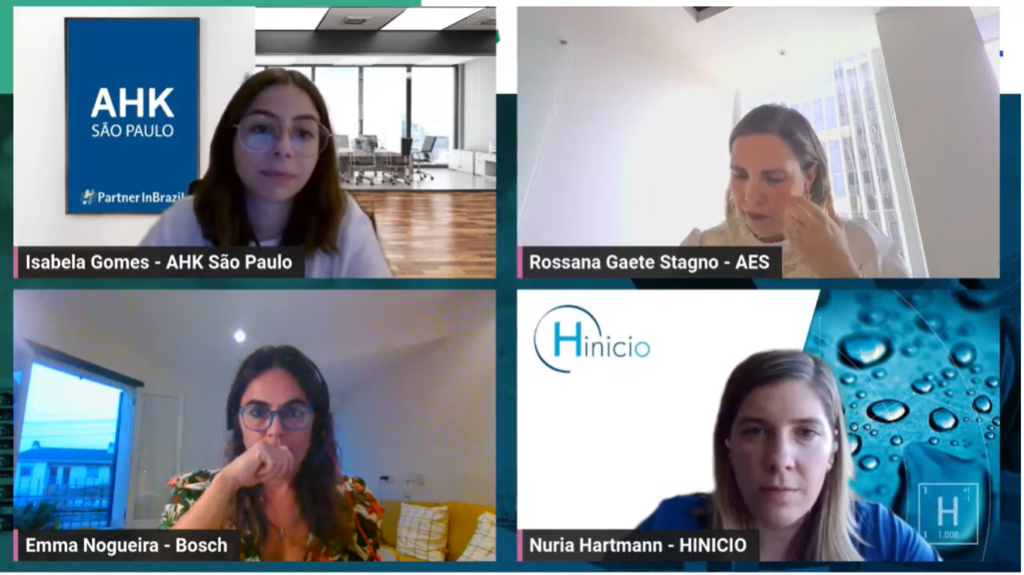
Webinar Power-2-You: Mulheres no mercado de Hidrogênio Verde – Source: AHK Sao Paulo
Want to learn more about how to anticipate these challenges and discover the potential of hydrogen in your development model? Contact us at colombia@hinicio.com and chile@hinicio.com for more information.


